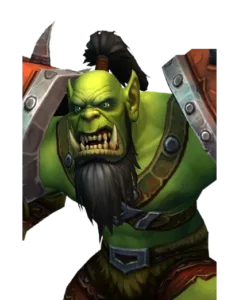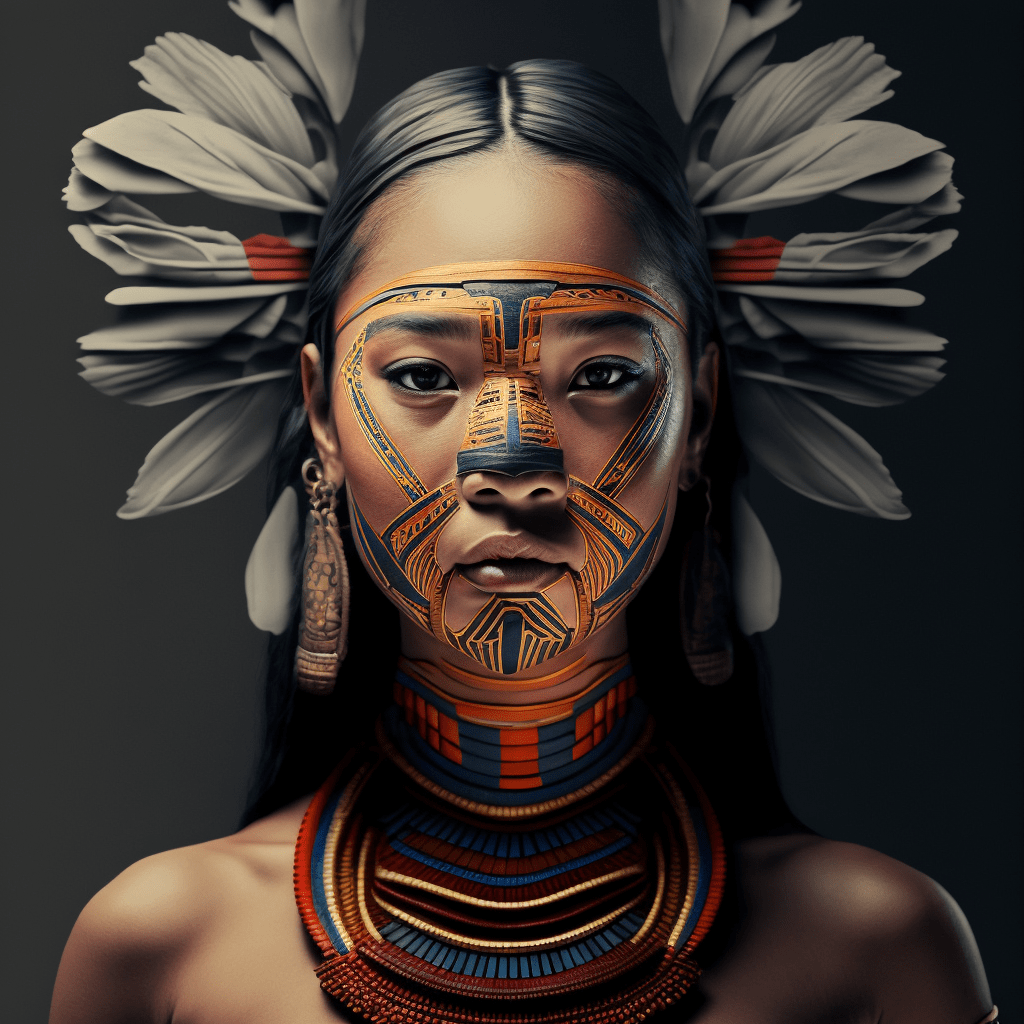
The Mayan Civilization is one of the most puzzling groups of indigenous people that has existed in the Yucatan peninsula since 1500 B.C. When modern archaeologists of the late 19th century studied their civilization, they unraveled one of the most advanced and semi-modern civilizations way more sophisticated compared to the Europeans of the same time in the 9th century. They discovered a system of writings, paper books, sophisticated architecture, plazas, palaces, temples, and gigantic pyramids all in the heart of a huge rainforest of the southern Yucatan plains.
It was also discovered that their once great civilization declined around 500 years ago even before the Spanish discovered only the remnant cities of the Mayans. Needless to say, the discovery of the remnants of the Classical Mayan civilization added to the pool of stories to the already rich history of the world. The Mayans left us with some complex mathematical techniques, a different perspective on astronomy, a 365-year-round calendar, their language, and their approach to creating Mayan names.
In this article, we’ll tackle more about the Mayan names, and their tradition in naming, meaning, and structure. You’ll get to know some awesome Mayan Boy Names, Mayan Girl Names, and some of their old Mayan Gods and their roles in their legends and culture. Mayan culture is one of the amazing people of the Mesoamerican era, so let’s learn more about them!
Did you know that ancient Mayans were very religious? Most of all their habits, including sports such as their popular ball game Ulama, and human sacrifices (mostly slaves or captured enemy soldiers), are a form of worship to their gods. The nearest person to their god is their governing ruler called Halach Uinik (overlord or chieftain). They are believed to be the representatives of their pantheons and is the sole ruler of the entire clan.
Because Mayans are religious, newborn children are taken by their parents to the supreme leader, or town elders in case the overlord is absent. During this time, a naming ceremony takes place where they consult their Mayan calendar for name ideas or inspirations. The Mayans believe that each year, month, week, or day, has its energies and uniqueness and therefore must be used to derive the proper name for a child. For basic names, a Mayan boy’s name starts by using the child’s day of birth as a prefix or starting syllable for the name. On the other hand, Mayan girl names are commonly given with the prefix “Ix” or starting with “i” or “x”.
Additionally, names derived from their deities are also common. Astronomy, weather, environment, and season are also factors in creating Mayan names. The following sections show a list of Mayan name examples for boys and girls.
Despite most classical Mayans abandoning their well-developed cities in the 9th century A.D. and being overrun and defeated by the Spanish conquistadores, many people of Mayan descent still exist today. This means, that their method and naming convention are still alive and are passed on to generations today. Below are some examples of popular Mayan boy names used today.
Perhaps this is one of the popular Mayan names for its resemblance to the Fabio name in Italy. However, this name also exists in Mayan culture which translates as “bean farmer” in English.
Translating as “war chief”, this Mayan boy’s name is perfect for a string-willed, and brave little boy. Some babies have fought a hard fight even after birth such as surviving actual birth or being born premature. This perfect is for them for they cling to life and have fought well to be around us despite the odds.
A name from the former Mayan ajaw (Lord) of the Maya city-state of Palenque, Kʼinich Janaab Pakal I. Pakal ruled the estate of Palenque for a solid 68 years and experienced enormous wealth before it fell victim to its population and inhabitant decline in 799A.D. Pick this name for a traditional Mayan name and for boys who depict leadership personalities.
This Mayan boy name means “Good” when translated. It can also be given and used as a girl name since in Mayan culture, positive adjectives such as good, pretty, or kind are genderless.
The name Gabor is a traditional Mayan boy name that means “bravest man of God”. This name reflects the religious culture of the Mayans, depicting their willingness to be named in service of their gods.
Huracan is the name of the Mayan god of winds, storms, and fire. Huracan is one of the important deities in the Mayan religion. He participated in the creation of the world and humanity. Pick this name for a creative and tinker child.

Mayan girl names usually start with either the syllables “I”, “x”, or “ix”. Although there are some names, especially deity names, that do not follow this convention. Additionally, there are gender-neutral names based on adjectives (such as Cualli) which can still be used as a Mayan girl name. Below are some examples of Mayan girl names together with their corresponding meaning.
This name is based on the Mayan goddess of the Earth and Moon. In Mayan mythology, Ixchel is depicted as a woman with a snake in her hair. There are many representations of Ixchel in the entire Mayan culture, but when using this name, the goddesses’ beauty and wisdom are said to be given to its bearer as well.
The word Eek’e (/ik-eh/) means “star” in the Mayan language. This is a perfect and suitable Mayan girl name for a child born under the blankets of stars in the night.
Translates as “life” or “origin of life” in the Mayan language. This Mayan name is given to a lively and healthy baby girl, although it can also be given to baby boys.
Cuzamil (/ku-za-mil/) is the name of a place given by the Mayans to an island filled with swallows. Today, the island is named Cozumel, which is also a nice alternative name for your baby girl. Do you see your baby girl aspiring high and envisioning herself to be an inspirational leader? This name is for you.
Mactzil (/mak-t-zil/) is the term used by Mayans to describe phenomena or event that is “miraculous”. Using this as a Mayan girl name implies that you consider your baby girl as a miracle from above and is one of the most joyous gifts you ever received. This is a good alternative for English names such as Grace, Faith, or Holly.
Plumeria is a native flower in Guatemala. It is also known as Frangipani which is also a good alternative name for your baby girl if you want to name them after local Mayan floras. Although the term Plumeria is not a Mayan word, it is still associated with the Mayan culture as this flower was a popular plan of the Mayan people during the Mesoamerica era.

Part of the discovery of the left-out great cities of the classic Mayans is their vast collection of deities that they worshipped throughout the Mesoamerica era. These deities are shared among different regions and cities of the entire Mayan empire, showing how big their territory was before their decline. These Mayan gods’ names are listed in different texts and scriptures and are worshipped in all of the city-states. Since there is a ton list of the Mayan pantheons, we will only cover the 9 important Mayan gods in their culture.
Itzamna is said to be the “creator” of the entire Mayan civilization. He is the most important and most popular god among the Mayans. In Mayan mythology, Itzamna taught his people (the Mayans) the arts of medicine, literacy, science, sculpture, and agriculture. The Mayans believe that it was Itzamna who constructed and ordered their calendar and was the sole teacher for cultivating complex crops such as cacao and maize.
Ixchel is the Mayan goddess of the moon. Although there are a lot of associations to Ixchel aside from the moon such as womanly crafts, beauty, fertility, cosmology, and ‘rainbow goddess’. The term “Ixchel” translates as “Lady of the Rainbow” in the Mayan language. She can be depicted as a woman with a live serpent springing on her headpiece, while she seats on a rainbow. Ixchel is also the deity associated with having children (fertility). It is said that she was a consort of Itzamna and with him, bore thirteen sons.
Ixchel is among the popular deities of the Mayan culture. The island Isla Mujeres (Island of Women) was named this way due to the many goddess statues scattered all over the island bearing the image of Ixchel. Archaeologists then conclude that this is because Ixchel is a very important deity among Mayan women and the island serves as the center of her worship.
Who do you think the Mayans prayed unto when they had a scarcity of rain for their crops or tremendous floods during storms? The supreme god of rain and storm, Chac. Chac, sometimes called Chaac, is an important deity in rain, storms, and agriculture. He is also nicknamed with terms like “Lord of Rains and Winds” and the Mayans believe that he supplements the important water sources of the city-states.
Chac is the center of attention when Mayans want to pray for a rainy day or season. The Mayans offer prayers and human sacrifices atop their high pyramids in hopes of courting his favor to aid them. Of all the deities of the Mayan pantheons, they consider Chac as the most unpredictable due to the uncertainties of storms and rains.
Also known as Yom Caax, Yum Kaax, or Yum Ka’ax, Yum Caax is the great god of woods, or god of nature. The important crops that are exclusive to the Mayan people such as cacao, corn, and tropical fruits are believed to be gifts from Yum Caax himself. Hunting and fishing are two skills that Mayans believed to be taught by him too, so they sometimes call Yum Caax the god of hunting.
Yum Caax is also an important deity for the Mayans. They believe that the result of their harvest will solely depend on how well Yum Caax has favored them with their worship of him. Mayans prayed and gave gratitude to him before they started to till the earth and clear the land for new cultivation. They also thank Yum Caax for a successful hunt. They strongly believe that the success of a hunt depends on their favor from Yum Caax. If they are not favored by the deity during a hunt, their arrows will turn back and miss their target.
Hunab Ku is translated as “The Solitary God”, or “The One God”. He is the highest deity, and the father of Itzamna, the creator of the Mayan civilization. The Mayans believe that Hunab Ku is the heart of the universe and the great source of all energy for all living beings. They also believe that Hunab Ku manifested in unseen forces such as light, sound, heat, energy, and most of all love.
The Spanish arrival in the New World led to the introduction of Catholicism to the Americas. Because of the similarities of Hunab Ku with the One God of the Catholic religion, the Franciscan missionaries from Europe were able to use this same concept to associate Hunab Ku with the Catholic God. Most Mayans were easily converted to Christianity because of these tactics. The Franciscans, on the other hand, burned a lot of Mayan codices and scriptures in an attempt to erase the paganism of the Mayans and thoroughly convert the peninsula into a Catholic colony.
Kukulkan is the feathered ‘Serpent God’ of the Mayan culture. The Mayans believe that during an equinox, Kukulcan returns to the world to commune with all of his worshippers and followers. In his return, he leaves offerings, blessings of full harvest, and good health before returning to the sacred seas and returning to the underworld.
There are many great city-states of the Mayans that worship Kukulkan as a primary deity aside from Hunab Ku and Itzamna. The Pyramid of Kukulkan was erected in the center of the city-state Chich’en Itza (the lost Capital City of the Classic Maya Empire) and is considered the biggest pyramid in the region dedicated to worshiping Kukulkan.
In other surrounding Mesoamerican civilization, Kukulkan is called Quetzalcoatl by the Aztecs and Toltecs, while the distant Quiche Mayans calls him Gucumatz. The Huastecs along the Gulf Coast referred to him as a “Wind God”, called Ehecatl.
You were able to witness a lot of Mayan terms by coursing through our article. We know you learned and observed a lot of things about Mayan names. One of the many similarities with Mayan names is the purposely use of the “k”, “x”, and “ch” in their names. This is the unique feature of the Mayan names and makes their terms and wordings distinguishable as Mayan. On top of that, Mayans have always used the letter “z” for most of the names of places and people. Unlike other languages which count “z” as a variant of the letter “s”.
Lastly, Mayans are very religious people. We can observe it from their numerous deities, and their association of daily activities as means to worshipping the gods. They pray to their deities when they plant, hunt, fish, or harvest. They pray to deities when they need rain, sunshine, or vegetation. All of their daily activities, including sports and games, have connections to their worship of their gods. This religious attitude of the Mayans also became a weakness that was exploited by the Catholic missionaries to convert the majority of the Mayan remnants to Christianity.
All in all, we can say that the Mayans were a peaceful, advanced, and prosperous civilization of their time. As to why and how they started to decline, and why they abandoned their great city-states remains a mystery that we hoped had never happened to their meaningful civilization.
